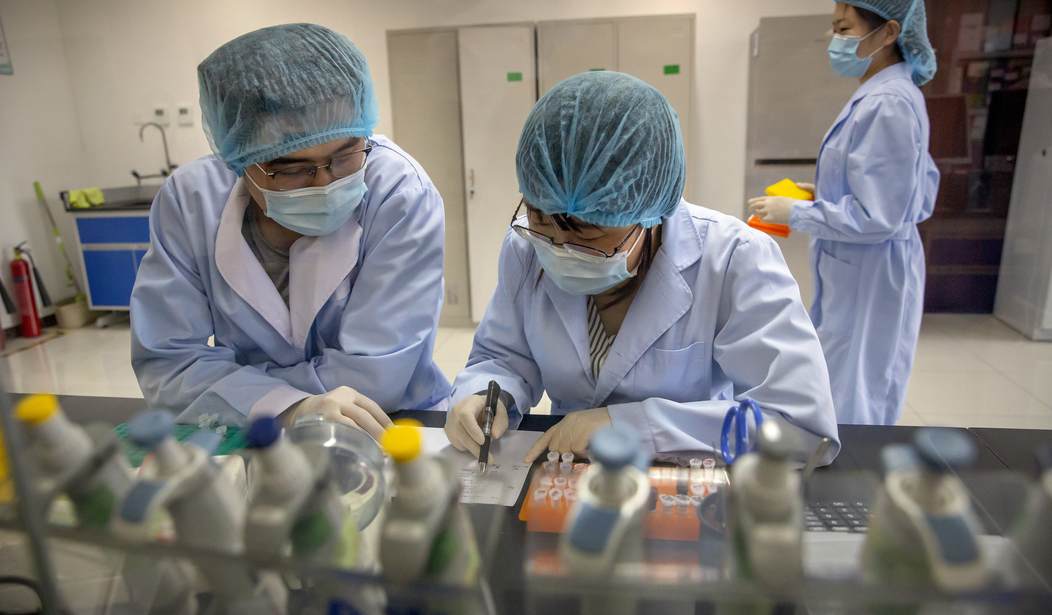Just another coincidence or is there a reason for this? Several news outlets are reporting on the results of an investigation by an Australian cybersecurity company which studied records of government purchases and found that China’s Hubei province, whose capital is Wuhan, increased its orders for PCR tests in mid-2019:
The data, compiled by Australian cybersecurity outfit, Internet 2.0, showed that the sale of polymerase chain reaction tests — used to detect the presence of specific viruses — jumped to 67.4 million yuan ($14.3 million) in 2019, from 36.7 million yuan in 2018, and 29.1 million in 2017.
“We have come to the conclusion that based on the data analysed it suggests the virus was highly likely to be spreading virulently in Wuhan, China as early as the summer of 2019 and definitely by the early Autumn,” the report states.
Internet 2.0’s analysis of the data gets even more specific. They not only know when the surge of spending began, they know who was buying, including the Chinese CDC and the PLA:
Orders doubled from universities, jumped fivefold from the Chinese Center for Disease Control and Prevention and surged tenfold from animal testing bureaus. Purchases from hospitals declined by more than 10%.
Monthly procurement data shows a spike in orders in May, especially from CDC buyers and the People’s Liberation Army.
“We believe the increased spending in May suggests this as the earliest start date for possible infection,” the report said.
Purchases rose sharply from July through October as well, in particular from the Wuhan University of Science and Technology. The institution spent 8.92 million yuan on PCR tests in 2019, about eight times its total for the previous year.
However, what we don’t know is why this sudden uptick happened. PCR tests can be used to identify a wide variety of pathogens. The Sydney Morning Herald notes that China had an outbreak of African swine fever in 2019 which infects pigs but not people. Still, that outbreak was expected to cut pork production by as much as 30% which amounts to as many as 200 million pigs. Maybe that’s what drove the interest in PCR equipment?
Also, it’s worth noting that several studies have suggested the virus started in the Wuhan area as early as October but not as early as May or June. Remember those claims about workers at the Wuhan Institute of Virology getting sick happened in November. All of that would fit with the virus being here in the US by mid-December. However, if the virus were circulating enough to prompt a response in May or June that’s a very different timeline. However, not all of the studies rule out an earlier timeline:
Italian researchers conducted measles and rubella surveillance in Lombardy, focusing on skin manifestations and measles-like symptomology.
They took 435 samples from 156 people and analyzed them for the presence of SARS-CoV-2.
They found genetic material belonging to the virus in 13 samples, 11 of which were from the pre-pandemic period. However, they found no clear evidence of infection in 281 samples collected between August 2018 and July 2019, ruling out much earlier circulation.
The first case they detected dated back to September 12, 2019, which spurred them to believe that infections emerged between late June and August 2019.
So most of the research suggests a slightly later date for the early circulation of the disease (October), but the possibility that Hubei province was concerned about a newly spreading coronavirus can’t be ignored. At a minimum, we need to know why there was a sudden surge in buying this equipment.
An Australian biochemist who has read the report and has requested anonymity because he wasn’t authorised to speak publicly on the matter, said more data was needed to explain the procurement numbers.
If this turns out to be related to COVID, it could cut both ways as far as an origin theory. On the one hand, the months between May and December, when existence of the virus was finally revealed, might explain why the virus seemed so well adapted to humans. Perhaps the initial crossover event wasn’t well adapted and didn’t spread quickly but had months to mutate before the first big super spreader event at the wet market in Wuhan.
On the other hand, the fact that the Chinese army was one of the organizations stocking up on PCR equipment is a bit worrisome. Either way, given China’s commitment to secrecy, we’re unlikely to ever find out why this happened.








Join the conversation as a VIP Member